13+ Sample Digital Learning Plan
-
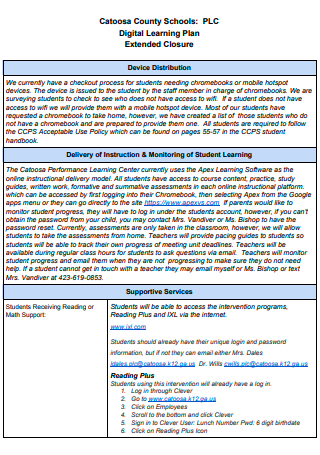
Digital Learning Plan Template
download now -

Basic Digital Learning Plan
download now -
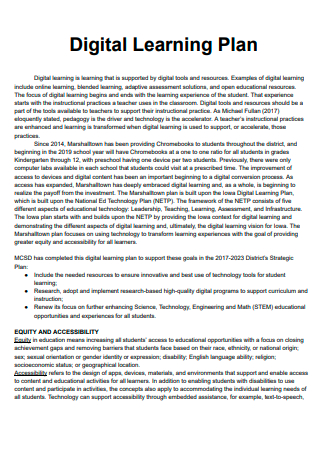
Digital Learning Plan Example
download now -
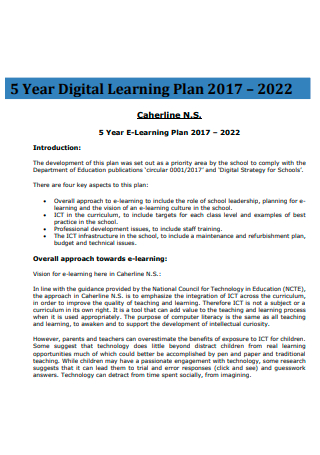
5 Year Digital Learning Plan
download now -
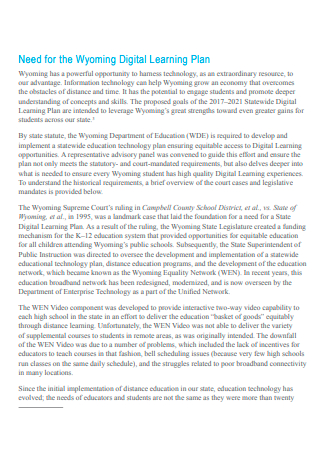
Standard Digital Learning Plan
download now -
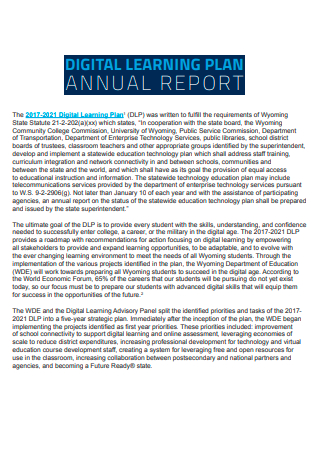
Digital Learning Plan Annual Report
download now -

Draft Digital Learning Plan
download now -
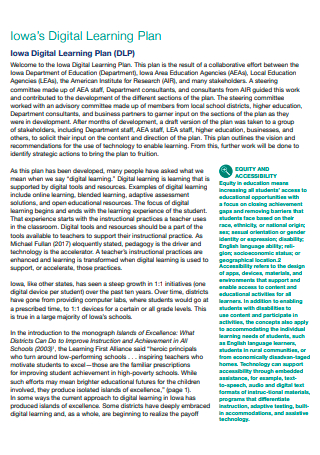
Digital Learning Plan in PDF
download now -
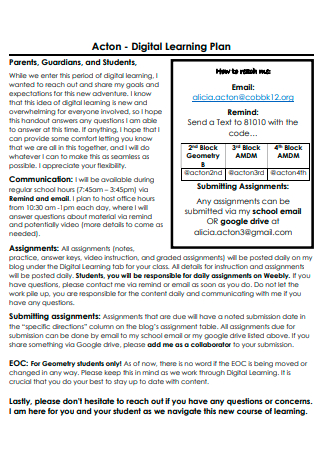
Formal Digital Learning Plan
download now -
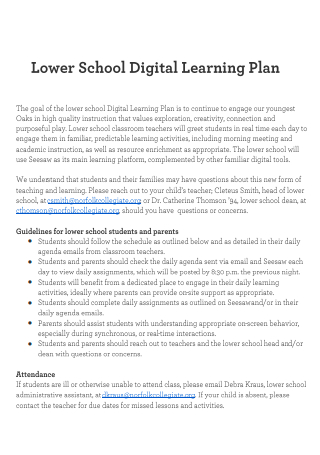
Lower School Digital Learning Plan
download now -
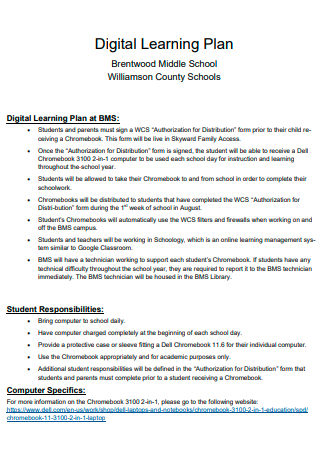
Printable Digital Learning Plan
download now -
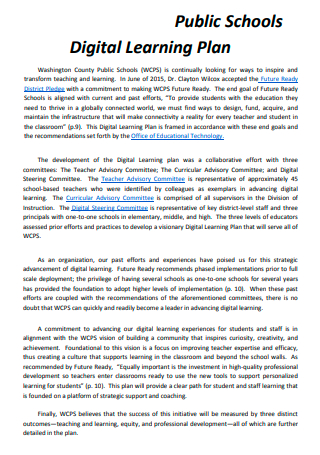
Public Schools Digital Learning Plan
download now -
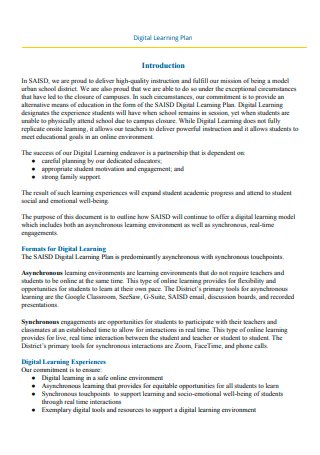
Digital Learning Plan Format
download now -

Simple Digital Learning Planning
download now
FREE Digital Learning Plan s to Download
13+ Sample Digital Learning Plan
What Is a Digital Learning?
What Is the Importance of The Digital Learning Plan?
Purpose of This Planning:
What Can Digital Learning Do?
What Is the Digital Learning Planning Cycle?
FAQs
What are the challenges of digital learning?
What are the advantages of digital learning?
What are the disadvantages of digital learning?
Does digital learning affect mental health?
Is digital learning better than the traditional one?
How does digital learning affect student’s performance?
What Is a Digital Learning?
Digital learning refers to the entrenching of digital technologies within learning, teaching, and assessment practices in a school. The Department of Education and Skills (the Department) used the term ICT in previous digital strategies and planning handbooks. In keeping with current international practice, the term “digital technologies” is now being used in preference to the term “ICT”. The list of digital technologies is continuously changing, and they have the potential to support a range of activities across the school. These digital technologies can be defined as electronic tools, systems, devices and resources that generate, store or process data. These include social media, online games and applications, multimedia, productivity applications, cloud computing, interoperable systems and mobile devices. The aim of the DL framework is to embed digital technologies into the everyday life of the school, to support teaching and learning as well as leadership and management.
Digital Learning is any kind of learning that is facilitated by digital technologies or by an instructional practice that makes efficient use of technology. Some people have described it as “learning facilitated by digital technology that gives students some element of control over time, place, path and/or pace”. Hence, it is a complex concept and one that diverges depending on the digital technologies being used and the associated learning context.
The use of digital technologies in schools is sometimes viewed as something extra—an activity that learners engage in outside of their regular school activities. The Digital Strategy stresses the need to embed digital technologies within learning, teaching and assessment and notes that all teachers will be expected to do so going forward.
What Is the Importance of The Digital Learning Plan?
Emerging a DL Plan offers many benefits in working towards the embedding of digital technologies into learning, teaching and assessment. Definitely, developing a digital learning plan will:
- Add a significant dimension to the Whole School Plan.
- Provide an opportunity for the school community to develop an agreed vision for digital learning within the school. Provide a focused digital learning implementation strategy for the school to help it realize the school’s vision for learning in the 21st century.
- Document how digital technologies will support learning, teaching and assessment strategies in the school.
- Assist the school in strategically allocating any funding received.
Purpose of This Planning:
The main purpose of these guidelines is to help practitioners take rights of the use of digital technologies in their school and to ask:
- How do we know how we are doing?
- What evidence do we have in support of our view?
- How well are we doing?
- What are our strengths?
- What are our areas for improvement?
- How can we find out more about our practices in relation to learning, teaching, and assessment?
- How can we improve?
The Digital Learning Planning Guidelines set out a bit-by-bit process to support those using the DL framework to consider how they use a range of digital technologies for teaching and learning and leadership and management. This comprises a reflection on current practice and the identification of areas where practice can be enhanced further, leading to the development and execution of a DL Plan. The DL Framework is the key document to deliberate when a school is embarking on developing a DL Plan.
What Can Digital Learning Do?
Digital learning can make the learners’ experience more engaging and foster deep learning; help learners assume control over the learning situation—by individualizing the pace with which new material is introduced, or by providing immediate feedback on how well they are learning; support collaborative learning, which provides opportunities for deep learning by having learners “teach” to each other new concepts that they have learned, and interact with other students and teachers in different countries; enhance teaching approaches, enabling the co-construction of knowledge while facilitating the widespread creation of innovative ways to build and share knowledge; enable learners to grasp concepts more quickly and fully, to connect theory and application more adeptly, and to engage in learning more readily; facilitate new ways of learning and create possibilities beyond the limits of our current imagination and; develop key skills to help young people become engaged thinkers, active learners’ problem solvers, skilled communicators and knowledge constructors.
It can be the case that digital technologies are only used in limited ways, sometimes as a substitute for the use of an older technology. For instance, a school might substitute the use of a book with a tablet device and never fully exploit the power of the device to transform learning, teaching, and assessment practices. The Digital Strategy states that the presence of digital technologies does not, of itself, facilitate digital learning and that teachers and school leaders are looking for support on how best to use digital technologies with their learners. Digital learning, together with wider educational system reforms, seeks to support teachers to move away from using digital technologies to support teacher-centered learning strategies to more constructivist approaches. The DL Planning Guidelines provide schools with a process for reviewing their existing DL practices, so they can enhance learning as time goes by.
What Is the Digital Learning Planning Cycle?
The Digital Learning Planning Cycle contains six steps that are similar to the process used by schools when engaging with SSE. The six steps provide a process for schools and individual teachers to get involved in reviewing and formulating a plan to enhance their DL practices. It should be noted that the six-step process should be situated within an agreed vision for digital learning within a school. Before embarking on the six-step process, it is important that a school spends time in considering what their vision for digital learning might be.
FAQs
What are the challenges of digital learning?
The challenges of digital learning are poor internet connectivity, absence of human connection, lack of opportunities of collaborating learning, supervision of teachers, decline of hands-on-learning and poor assessment of examinations are some of the trials and tribulations online education platforms face.
What are the advantages of digital learning?
- Saves time and money. One of the most obvious advantages of digital learning is that you can save time and money. You can manage your schedule and take online courses at your most convenient time, whether early in the morning, late afternoon, or evening. You save money, too, because you don’t have to pay for transportation or worry about eating on the go.
- Personalized learning. You can choose your learning path and study at your own pace. You become more motivated and invested in the course.
- Better in retaining. Digital learning makes use of different platforms like Pedagogue, which provides interactive content. Also, you can share your thoughts and opinions with others. The more engaging the lessons, the more students can remember the information.
- Environment-friendly. Digital learning is also more environmentally friendly because it doesn’t contribute to the pollution brought about by paper production.
- Cost-effective. Students aren’t the only ones that can save money in digital learning. Many educational institutions save money through this set-up because there is no need to use a physical classroom, which translates to reduced monetary spending.
It is the most modern way of learning that requires only a gadget and internet access. However, it is not for everybody. Being aware of the advantages and disadvantages of digital learning can help you decide whether this is for you or not.
What are the disadvantages of digital learning?
- Lacks social interaction. Digital learning is one of the causes of social isolation because you don’t see your teachers and classmates face-to-face anymore. Interaction is very limited to none.
- Inaccessible to others. Consider yourself lucky if you are located in an area where the internet connection is fast and stable. Unfortunately, some have very limited access to the internet. They have to go to internet cafes or use public Wi-Fis which is very inconvenient.
- Cheating is unavoidable. Digital learning includes assessment, just like in a regular classroom setting. However, there are no teachers or proctors to watch over you during exams. It is easy for online students to share answers knowing there’s nobody watching.
- Requires self-motivation and proper time management skills. You have to motivate yourself to study hard, take down notes, and gather more information. You should also manage your time well by learning how to juggle studying while doing other things like household chores or earning money part-time.
- Focuses more on theory. You will spend most of your time listening to podcasts, watching videos, and looking at slide presentations. There is no hands-on experience like conducting experiments.
Does digital learning affect mental health?
Increased stress and anxiety alongside the lack of social interaction, online class structure can affect teens and adolescents in a number of ways: they may feel heightened anxiety about keeping up to date with their school work. While, other teens may experience difficulty concentrating or staying focused while at home.
Is digital learning better than the traditional one?
Digital learning is surely the more effective option for students, but it is also better for the environment. According to the Open University in Britain, they have found that online courses equate to an average of 90% less energy and 85% fewer CO2 emissions per student than traditional in person courses.
How does digital learning affect student’s performance?
The interactive and flexible nature of online learning makes it very effective in career progression, increasing the employability of several students and making faculty members better qualified to work in the digital age. Some may even argue that it is better than classroom-based learning.
While the creation of a digital learning plan involves the entire school community, a school could form a digital learning team to lead the process. This team should represent a cross-section of the school community and include teachers who regularly use digital technologies and those who don’t. Where possible, the team should consist of a mix of teachers from different class levels in primary schools, and subject areas in the case of post-primary schools. The team should coordinate the process of developing the plan while ensuring that all staff has an opportunity to participate in its creation.
Digital learning plan should not be viewed as a once off event. It needs to be reviewed and updated regularly to reflect where the school is in embedding digital technologies into all aspects of school life. Thus, the review phase of the plan is a key step in identifying the new target areas the school will select for the next iteration of the plan.
Moreover, online education brings a positive impact in the lives of students and working professionals. It gives an opportunity to take up additional courses along with their studies or job as per their convenience.
